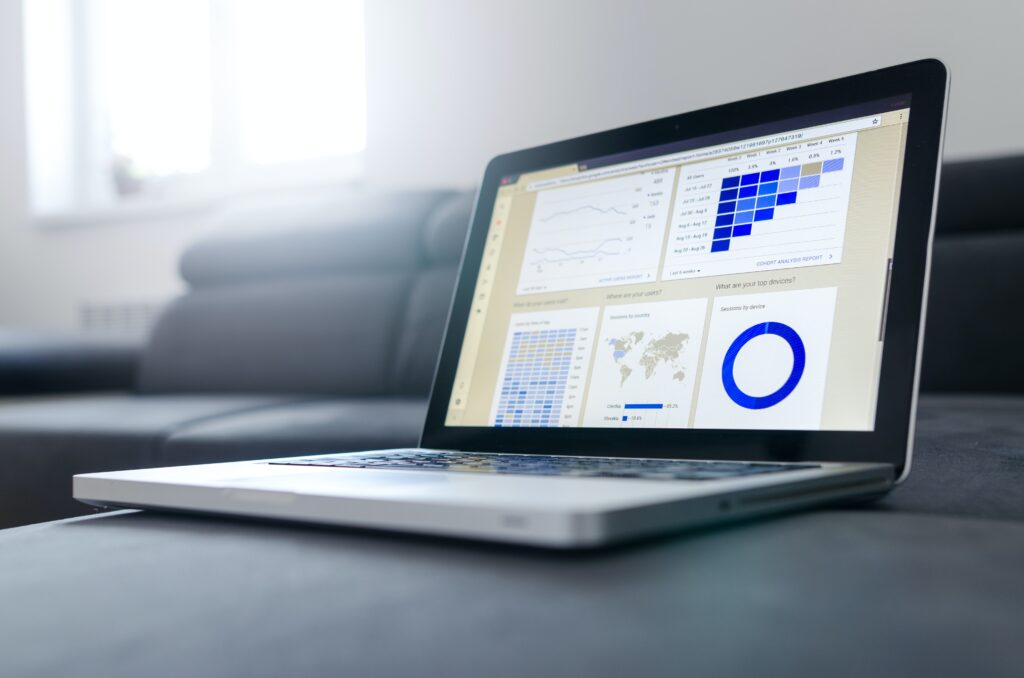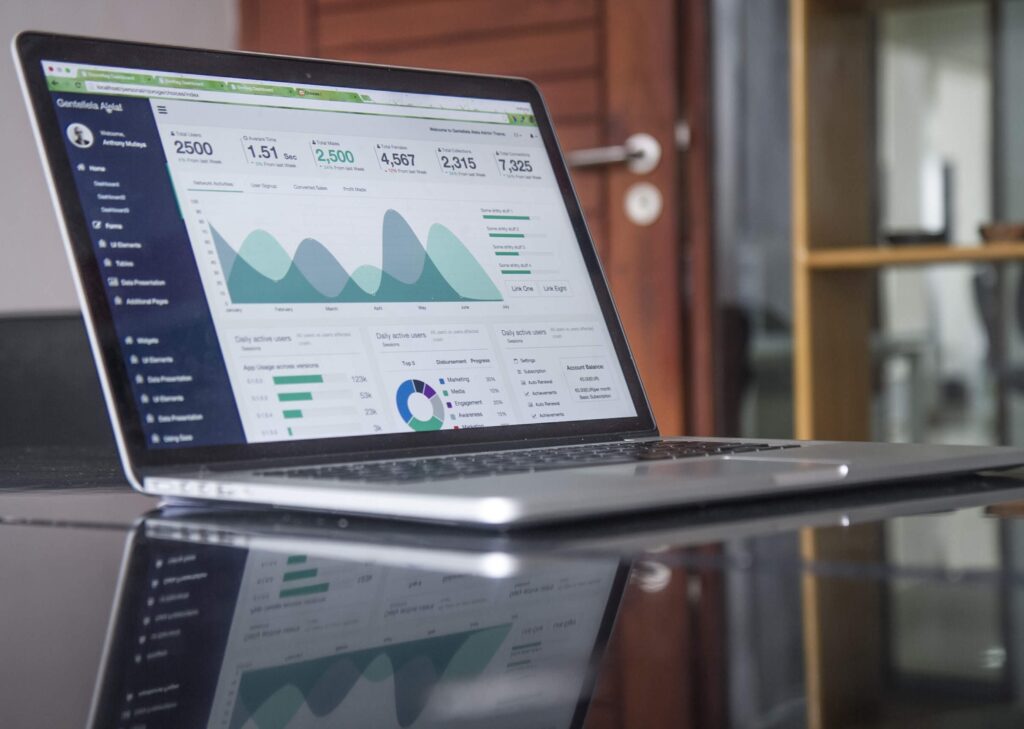In this article, we’ll explain how data logger temperature works and help you understand its functioning. You’ll learn about the components of a data logger temperature and how it measures and records temperature readings. We’ll also discuss the different types of data logger temperature and their applications. By the end of this article, you’ll have a clear understanding of how data logger temperature technology works and its importance in various industries.
What is a Data Logger?
A data logger is a device that is used to measure and record data over a specified period of time. It is essentially a digital recorder that collects information from various sensors and stores it for later analysis. Data loggers are commonly used in a wide range of industries and applications, including temperature monitoring. In this article, we will focus specifically on how temperature data loggers work and their importance in various industries.
Definition of Data Logger
A data logger is a small electronic device equipped with one or multiple sensors that measure and record various parameters, such as temperature, humidity, pressure, voltage, and more. These devices are typically battery-powered and come in various sizes and configurations to suit different needs.
Types of Data Loggers
Data loggers come in different types and models, each designed for specific applications. Some common types of data loggers include:
- Temperature data loggers
- Humidity data loggers
- Pressure data loggers
- Voltage data loggers
- Light data loggers
- Acceleration data loggers
While each type of data logger has its own unique characteristics and uses, we will focus on temperature data loggers in this article.
Understanding Temperature Data Logging
Importance of Temperature Data Logging
Temperature plays a crucial role in many industries, including food and beverage, pharmaceuticals, healthcare, and HVAC systems. Monitoring and maintaining optimal temperatures is essential for ensuring safety, quality, and efficiency in these industries. This is where temperature data loggers come into play.
Temperature data loggers are used to monitor temperature fluctuations over time, ensuring that temperatures remain within specified ranges. By continuously recording temperature data, these devices provide valuable insights for process optimization, quality control, compliance, and troubleshooting.
Components of a Temperature Data Logger
A typical temperature data logger consists of several key components, including:
-
Sensor: The sensor is the part of the data logger that measures the temperature. Different types of sensors, such as thermocouples, resistance temperature detectors (RTDs), and thermistors, are commonly used depending on the specific application and temperature range.
-
Data storage: Data loggers have built-in memory or storage capacity to store the recorded temperature data. The storage capacity may vary depending on the device, ranging from a few kilobytes to gigabytes.
-
Battery: Data loggers are usually powered by batteries to ensure uninterrupted operation. The battery life varies depending on factors like the frequency of measurements, data recording interval, and the device’s power management capabilities.
-
Display: Some data loggers have built-in displays that allow users to view real-time temperature readings and configure settings. However, many data loggers are designed for autonomous operation and do not have a display.
-
Communication interface: Many modern data loggers include communication interfaces such as USB, Bluetooth, or Wi-Fi, allowing users to transfer data to a computer or a mobile device for further analysis and reporting.
How Temperature Data Loggers Measure and Record Data
Temperature data loggers measure temperature by using the built-in sensor or by connecting to an external temperature probe or sensor. The sensor detects changes in temperature and converts them into electrical signals. These signals are then processed by the data logger, which converts them into digital data and stores them in its memory.
Data loggers typically have a programmable sampling rate, which determines how frequently they measure and record temperature data. The sampling rate can range from milliseconds to hours, depending on the application requirements. For example, in a fast-changing environment, such as a laboratory experiment, a data logger may need to record temperature every second. On the other hand, in a slow-changing environment, such as long-term monitoring in a warehouse, the data logger may record temperature data every few minutes or hours to preserve battery life and memory capacity.
The recorded temperature data can be downloaded from the data logger using the built-in communication interface. Users can then analyze the data using specialized software or export it to other applications for further analysis, reporting, and visualization.

Types of Temperature Data Loggers
Single-Use Temperature Data Loggers
Single-use temperature data loggers, also known as disposable temperature loggers, are designed for one-time use. They are commonly used in applications where the cost of retrieving the loggers after use is prohibitive or unnecessary. These loggers are typically pre-configured with specific settings and are set to record temperature over a predefined period of time. Once the data collection is complete, the logger is discarded, and the recorded data is analyzed for compliance, quality control, or troubleshooting purposes.
Single-use temperature data loggers are often used in industries such as transportation and logistics, where monitoring and documenting temperature conditions during the transportation of perishable goods, pharmaceuticals, or vaccines is critical.
Multi-Use or Reusable Temperature Data Loggers
Multi-use or reusable temperature data loggers are designed to be used repeatedly. These loggers offer flexibility and cost-effectiveness, as they can be programmed and used in various applications. They are typically more durable and rugged compared to single-use loggers, allowing them to withstand harsh environmental conditions.
Reusable temperature data loggers are commonly used in industries such as food processing and storage, pharmaceutical manufacturing, and HVAC systems monitoring. They allow continuous temperature monitoring and data collection over extended periods, providing valuable insights for process optimization, quality control, and compliance.
Wireless Temperature Data Loggers
Wireless temperature data loggers, as the name suggests, use wireless technology to transmit temperature data to a remote location. These loggers eliminate the need for physical connection and allow real-time monitoring and alerts. They are commonly used in applications where immediate notification of temperature deviations is critical, such as cold chain management or laboratory experiments.
Wireless temperature data loggers can communicate using various wireless technologies, including Wi-Fi, Bluetooth, and cellular networks. They offer the convenience of remote access to temperature data, enabling users to monitor and control temperature conditions from anywhere, anytime. This real-time monitoring capability helps prevent temperature excursions, ensure product quality, and reduce potential losses.
Applications of Data Logger Temperature
Food Safety and Storage
One of the most important applications of temperature data loggers is in the food industry. Temperature plays a crucial role in ensuring food safety and preventing the growth of bacteria and pathogens. Data loggers help monitor and maintain optimal temperatures during food processing, transportation, and storage.
For example, in cold storage facilities, temperature data loggers continuously monitor and record temperature conditions to ensure that perishable food products are kept at the required temperature range. In case of any temperature deviations, the loggers can trigger alarms or send notifications, allowing immediate corrective actions to be taken.
Temperature data loggers are also used in the food transportation industry to monitor the temperature of refrigerated trucks or shipping containers. These loggers help ensure that the temperature remains within the acceptable range during transportation, preserving the quality and safety of perishable food items.
Pharmaceutical and Healthcare Industries
Temperature control is critical in the pharmaceutical and healthcare industries to maintain the efficacy and quality of medications, vaccines, and other temperature-sensitive products. Temperature data loggers are widely used in these industries to monitor and document temperature conditions during manufacturing, storage, and transportation.
In pharmaceutical manufacturing, temperature data loggers help ensure that drugs and vaccines are stored at the correct temperature throughout the production process. They also play a vital role in compliance with regulatory standards and quality control practices.
In healthcare settings, temperature data loggers are used to monitor temperature-sensitive products, such as blood, tissues, and vaccines, within storage facilities and refrigerators. These loggers help prevent temperature excursions and ensure that the products are safe for patient use.
HVAC Systems Monitoring
Heating, ventilation, and air conditioning (HVAC) systems are responsible for maintaining optimal comfort and air quality in various settings, including residential, commercial, and industrial buildings. Temperature data loggers are used to monitor and optimize the performance of HVAC systems by continuously recording temperature conditions.
By monitoring temperature data, HVAC technicians can assess system efficiency, identify potential issues, and make adjustments to optimize energy consumption. Temperature data loggers help ensure that the heating and cooling systems maintain the desired temperature range, contributing to energy savings and enhanced occupant comfort.
Transportation and Cold Chain Management
Temperature control is crucial in the transportation and logistics industry, especially for perishable goods and pharmaceutical products. Data loggers are used to continuously monitor temperature conditions during transportation, ensuring that the cold chain is maintained and temperature-sensitive products are preserved.
For example, in the transportation of vaccines, temperature data loggers are used to monitor the temperature inside shipping containers or vehicles. These loggers provide valuable information about temperature fluctuations, helping identify potential issues and ensuring that the vaccines are maintained within the required temperature range.
Cold chain management is also critical in the fresh food industry, where maintaining the quality and safety of perishable food items is essential. Temperature data loggers help monitor and document temperature conditions during transportation, ensuring that the cold chain is maintained from farm to table.

Benefits of Using Data Logger Temperature
Accurate and Reliable Temperature Monitoring
Temperature data loggers provide accurate and reliable temperature monitoring, ensuring that temperature conditions are maintained within specified ranges. By recording temperature data at regular intervals, these loggers capture fluctuations that may go unnoticed during manual monitoring. This accurate and continuous monitoring helps prevent temperature excursions and ensures product quality and safety.
Compliance with Regulatory Standards
Many industries, such as food and pharmaceuticals, are subject to strict regulatory standards regarding temperature control and monitoring. The use of temperature data loggers helps organizations comply with these standards by providing accurate and verifiable temperature records. Data loggers allow organizations to easily demonstrate compliance during inspections and audits, reducing the risk of non-compliance penalties and product recalls.
Enhanced Product Quality and Safety
Temperature control is essential to maintaining product quality and safety in various industries. Temperature data loggers help identify temperature fluctuations or deviations that can potentially affect product quality or compromise patient safety. By capturing and analyzing temperature data, organizations can take preventive measures to ensure product integrity and prevent costly quality issues.
Improved Operational Efficiency and Cost Savings
Temperature data loggers provide valuable insights into process optimization and energy efficiency. By monitoring temperature conditions, organizations can identify areas of improvement in their operations, such as HVAC system optimization, better insulation, or improved cold chain management practices. These optimizations can lead to reduced energy costs, improved operational efficiency, and enhanced overall productivity.
Factors to Consider When Choosing a Data Logger
Temperature Range and Accuracy
When choosing a temperature data logger, it is crucial to consider the temperature range that the logger can measure accurately. Different applications may require different temperature ranges, so selecting a logger with the appropriate range is essential. Additionally, the accuracy of the data logger is also a critical factor to ensure reliable temperature measurements.
Memory Capacity
Data loggers come with varying memory capacities, ranging from a few kilobytes to several gigabytes. The choice of memory capacity depends on the application requirements and the frequency of data recordings. If long-term monitoring is needed or if the logger cannot be easily accessed for data retrieval, a higher memory capacity is essential.
Battery Life
The battery life of a data logger determines how long it can operate without requiring a battery replacement. Battery life is directly related to the sampling rate and the frequency of data recording. It is crucial to choose a data logger with a battery life that suits the application requirements to ensure uninterrupted monitoring.
Data Accessibility and Software Compatibility
The method of data retrieval and the compatibility of data loggers with software systems should also be considered. Some data loggers offer wireless data transmission capabilities or have built-in USB connectors for easy data access. Compatibility with data analysis software or cloud-based platforms is also important for efficient data management and analysis.
Durability and Environmental Conditions
Data loggers may be subjected to harsh environmental conditions, such as extreme temperatures, humidity, or physical impacts. It is essential to choose a data logger that is designed to withstand such conditions and still perform accurately. Rugged data loggers with waterproof or shock-resistant features are suitable for applications in challenging environments.

Best Practices for Using Data Logger Temperature
Proper Placement and Calibration
To ensure accurate temperature measurements, data loggers should be placed in locations that represent the true temperature conditions. Placement in proximity to the products or critical areas of the monitored environment is essential. Additionally, regular calibration of the data logger and the temperature sensor is recommended to maintain accurate measurements.
Regularly Monitor and Analyze Data
Temperature data loggers provide valuable information that can be used to optimize processes or detect anomalies. Regular monitoring and analysis of temperature data allow organizations to identify trends, patterns, and potential issues. This helps in making informed decisions and taking corrective actions before any critical events occur.
Data Backup and Security
Temperature data collected by data loggers should be regularly backed up to prevent data loss. This can be done by exporting the data to external storage devices or cloud-based platforms. Ensuring proper data security measures, such as access controls and encryption, helps protect sensitive temperature data from unauthorized access and manipulation.
Challenges and Limitations of Data Logger Temperature
Calibration and Maintenance
Data loggers require periodic calibration to ensure accurate temperature measurements. Calibration involves comparing the data logger readings with a reference standard and adjusting the readings if necessary. Failure to calibrate data loggers regularly may result in inaccurate temperature measurements and compromised data integrity.
Maintaining data loggers in good working condition also requires regular maintenance, such as battery replacements and sensor cleaning. Failure to perform maintenance activities may result in data logger failures or inaccurate readings.
Data Interpretation and Analysis
Temperature data collected by data loggers may present challenges in terms of interpretation and analysis. Analyzing large volumes of data can be time-consuming and complex, especially when looking for trends or anomalies. Proper data analysis techniques and tools are essential to derive meaningful insights from temperature data and make informed decisions.
Cost Constraints
Data loggers vary in pricing depending on factors such as brand, features, and capabilities. The cost of data loggers, especially for large-scale deployments or projects with specific requirements, can be a limiting factor. Organizations should carefully consider their budget and project needs to select data loggers that strike a balance between cost and functionality.
Future Trends in Data Logger Technology
Advancements in Wireless and IoT Integration
The future of data logger technology lies in wireless connectivity and integration with the Internet of Things (IoT). Wireless data loggers that can transmit data in real-time have gained popularity due to their convenience and immediate notifications. The integration of data loggers with IoT platforms allows for seamless data collection, analysis, and automation in various industries.
Data Visualization and Analytics
As data collection capabilities increase, the need for effective data visualization and analytics tools becomes more crucial. Data loggers that provide intuitive data visualization dashboards or integrate with data analytics software enable users to gain valuable insights from the temperature data in a more easily understandable format. Advanced analytics capabilities can help identify patterns, anomalies, and opportunities for process optimization.
Miniaturization and Portability
Data loggers are becoming smaller and more portable, allowing for easier deployment and monitoring in various applications. Miniaturization of sensors and advancements in microelectronics have made it possible to create small and lightweight data loggers that can be easily integrated into existing systems or attached to objects of interest. This trend enables temperature monitoring in previously inaccessible areas or on small, delicate objects.
Conclusion
In conclusion, temperature data loggers play a crucial role in a wide range of industries and applications. By continuously monitoring and recording temperature conditions, data loggers ensure compliance with regulatory standards, enhance product quality and safety, improve operational efficiency, and provide valuable insights for decision-making. Choosing the right data logger based on factors like temperature range, memory capacity, battery life, and software compatibility is critical to obtaining accurate and reliable temperature measurements. As technology advances, the future of data logger technology lies in wireless connectivity, data visualization, miniaturization, and the integration of data loggers with IoT platforms. By embracing these advancements, organizations can further optimize processes, improve energy efficiency, and drive continuous improvement in temperature monitoring.

